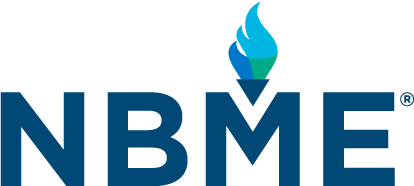Article• 6 minute read

Anastasiya Lipnevich, PhD, Professor of Educational Psychology, CUNY and NBME Visiting Scholar, shares her insights on the components of formative assessment – or assessment for learning – that incorporates learning objectives and timely feedback to support a system focused on improving learner competencies throughout their journey.
In the fast-changing world of medical education, assessments go way beyond grading, licensing, and certification. At its core, assessment involves the systematic gathering of information to form comprehensive judgments about a student’s overall competence and readiness for medical practice. This process typically takes two primary forms: summative and formative.
Both types of assessment play important roles and have their unique place in the training process. Summative assessment, the kind we see at the end of a course or program, sets benchmarks and ensures that students meet key standards. This form of evaluation acts as the final arbiter, determining who has successfully mastered the required competencies.
However, it is the formative assessment, also known as assessment for learning — the ongoing, feedback-driven process — that has the potential of helping students grow, identify knowledge gaps, track their progress and hone their self-reflection skills.
For instructors, it provides insights, enabling them to refine their pedagogical approaches and address individual student needs based on incoming assessment information.
This dual approach ensures that in medical education we not only measure clinical competence but actively cultivate it, preparing health care professionals who are knowledgeable, adaptable and ready to take charge of their own learning.
Components of Formative Assessment
Formative assessment is built on three key components: gathering evidence about what learners know, specifying learning objectives and generating actionable feedback. When used together, these elements create a safe environment where students can practice and refine their skills, learning from their mistakes in real time.
Gathering Evidence of Learning: A Continuous Pulse Check
In medicine, you can’t (rather, shouldn’t!) treat a patient without first diagnosing the problem. Formative assessment operates in the same way. Just as ongoing monitoring of a patient’s condition guides treatment decisions, formative assessments provide real-time insights that help both students and instructors make necessary adjustments before issues become critical.
Whether it’s through clinical rotations, simulations or reflective assignments, formative assessments give both students and instructors a clear sense of how well key skills are being mastered. Are students excelling in patient communication but struggling with diagnostic reasoning? Are they nailing procedures but missing the subtleties of bedside manner? This real-time feedback allows both students and instructors to address weaknesses early, long before final evaluations or high-stakes situations.
Clarifying Learning Objectives: Clear Goals for Clear Progress
In medical education, students can’t be expected to master a skill if they’re unclear on what they’re working toward. This is where learning objectives come in. These objectives, whether they involve refining clinical judgment, improving patient communication or mastering surgical techniques, are the foundation of formative assessment.
Here’s the critical point: formative assessments are most effective when they’re tightly aligned with these learning objectives. If the goal is for students to improve their patient communication, the assessments should focus on skills like history-taking, explaining diagnoses or handling tough conversations. When students know exactly what’s expected, they’re better able to focus their efforts on developing the competencies that matter most.
For instructors, this clarity is equally important. It ensures that the feedback they provide is directly related to what the student needs to achieve. A well-aligned formative assessment allows both students and instructors to home in on what matters, avoiding distractions and keeping everyone on track.
Generating Actionable Feedback: The Essence of Formative Assessment
Feedback is the heartbeat of formative assessment, and in the world of medical education, it needs to be specific and actionable. Did a student fumble through a patient history? Feedback should pinpoint where they lost focus and how they can improve next time. Did their diagnostic reasoning fall flat during a clinical scenario? Feedback should highlight how they can sharpen their thought process and connect symptoms with possible diagnoses more effectively.
And perhaps most importantly, formative feedback is timely. Instead of waiting until the end of the term, students receive feedback throughout their training, giving them the chance to act on it right away. This makes formative assessments feel less like a high-stakes exam and more like a guide that helps students navigate through the complexities of medical practice.
Formative Assessment: A Safe Space to Learn, Practice, and Improve
One of the most powerful aspects of formative assessment is that it creates a safe space for students to practice, make mistakes, and improve without the fear of failure. In medical education, where perfection is expected (we don’t want our surgeons to be 80% proficient, do we?), students need opportunities to try, fail, and try again. Whether it’s in a simulation lab or during clinical rotations, formative assessments offer a low-stakes environment where students can refine their skills and build confidence.
Mistakes are an inevitable part of learning, but formative assessment allows students to see those mistakes as stepping stones rather than stumbling blocks. This practice-focused approach is critical for developing the resilience and competence required in health care professionals who will one day make life-saving decisions under pressure.
Shaping the Health Care Providers of Tomorrow
Incorporating formative assessment into medical education is about more than just checking boxes. It’s about creating a system with a wide repertoire of assessment tools and approaches that are focused on student improvement. By gathering evidence of learning, clarifying objectives, and providing timely feedback, formative assessments offer a roadmap for growth that goes far beyond traditional summative tests.
This approach not only measures competence but actively builds it, giving students the confidence and skills to take charge of their own learning and to continually improve as they progress. In an environment as high stakes as health care, formative assessment ensures that mistakes made in training translate into mastery in practice.
Suggested reading:
